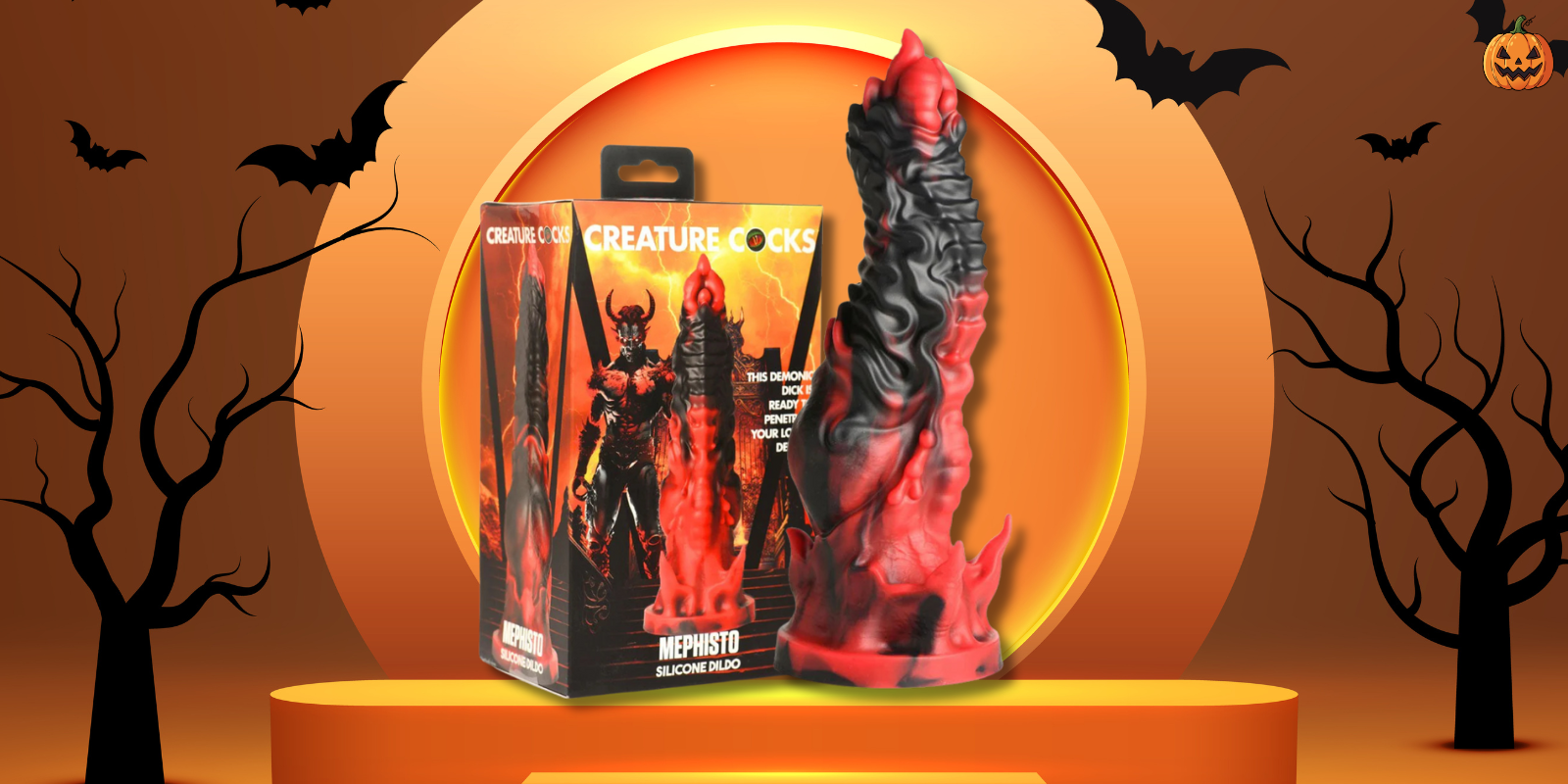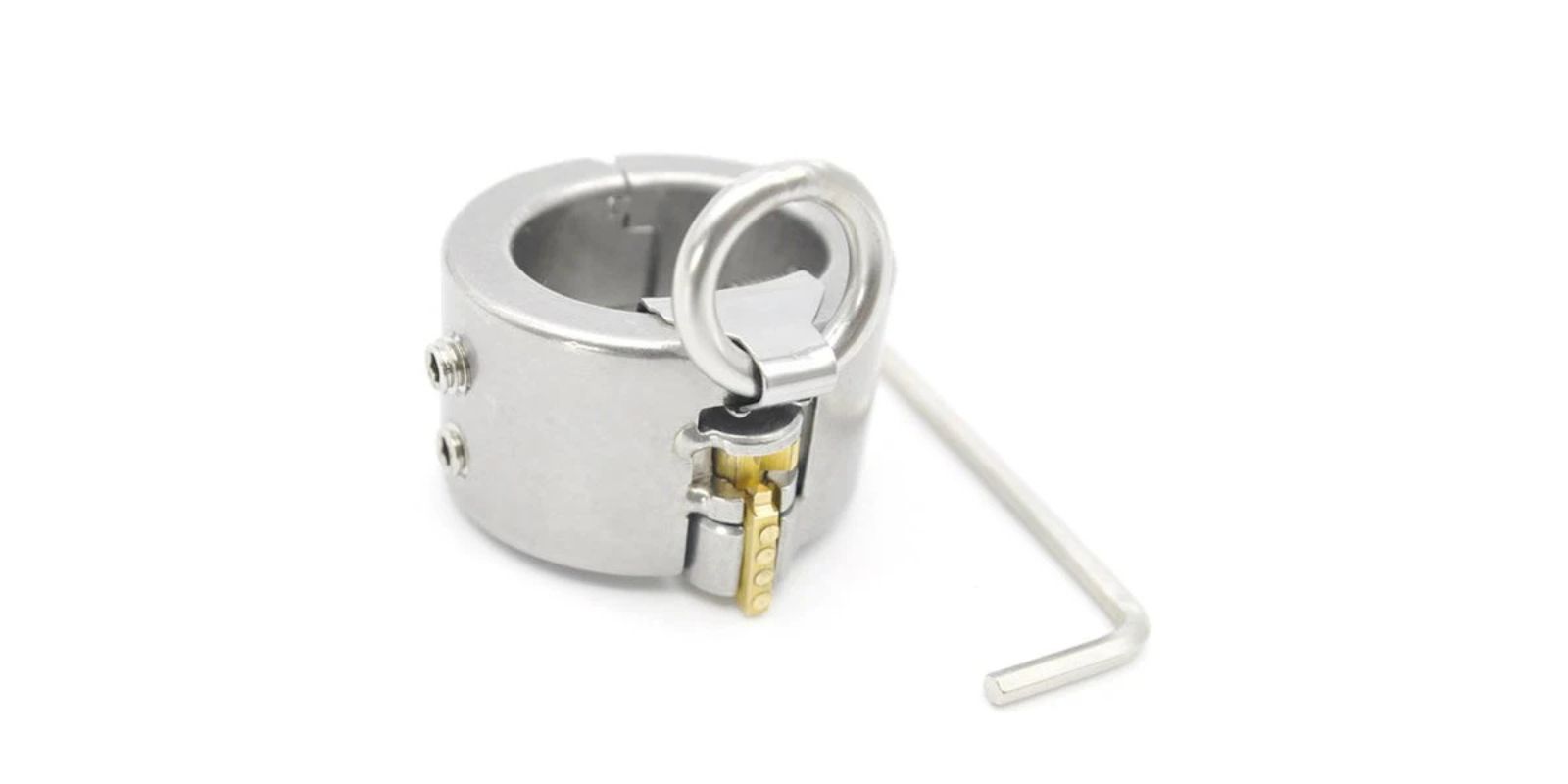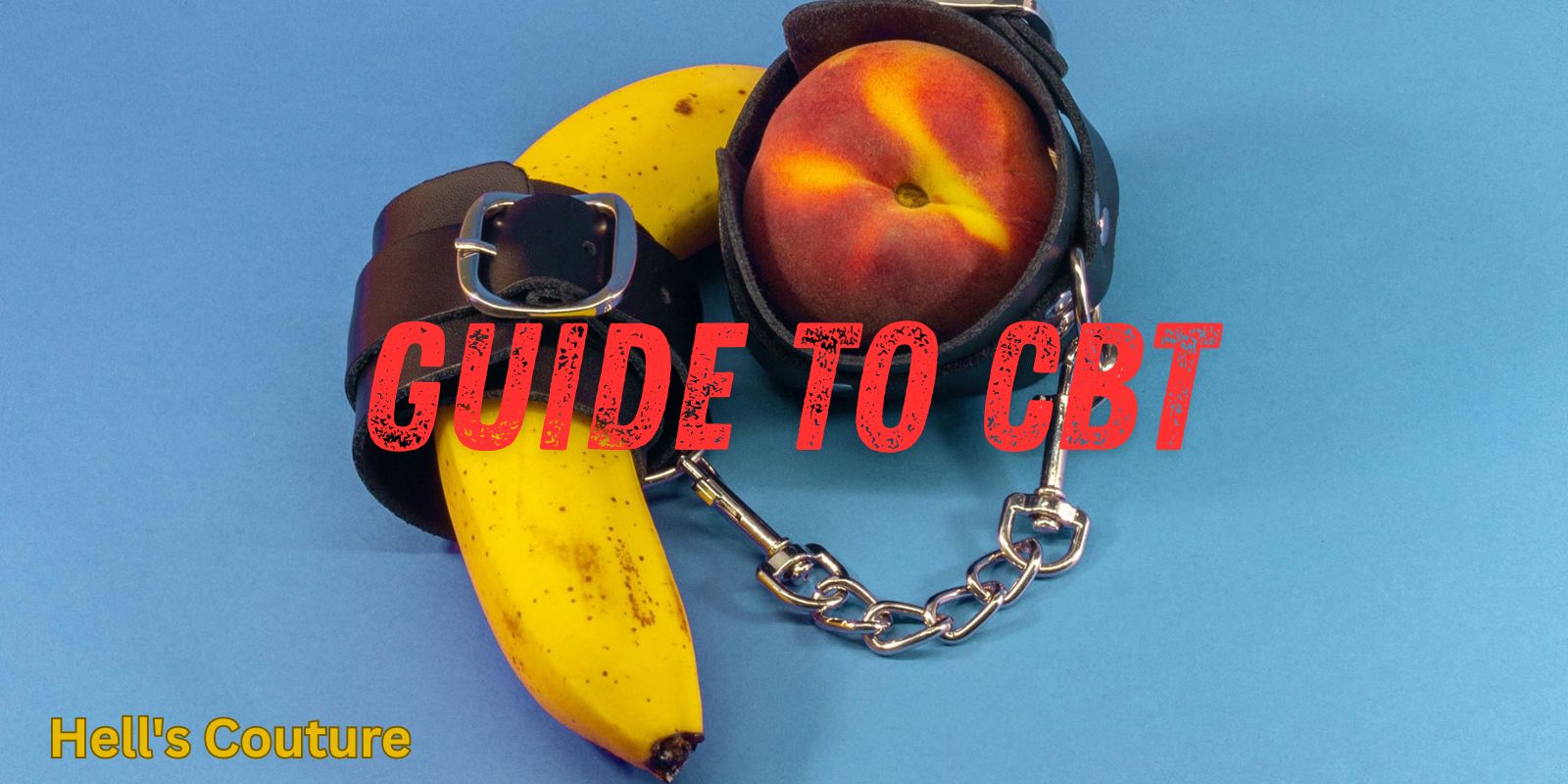Guide to CBT : Understanding Cock & Ball Torture, Safety, and Consent
Guide to CBT explains the kink known as cock and ball torture (CBT), covering common types of play, the toys involved, and — most importantly — how to keep scenes consensual and as safe as possible. CBT is a form of BDSM that focuses on genital sensation and power exchange; approached responsibly it can be an intense but negotiated part of adult play.
Table of Contents – Guide to CBT
- What Is CBT?
- Why People Explore CBT
- Common Forms of CBT Play
- Toys and Devices Used in CBT
- Safety: Red Flags & When To Stop
- Consent, Negotiation & Aftercare
- FAQs
- Suggested Product
- Putting Safety First in CBT
Cock and ball toys, often referred to as cock rings or penis rings, are sexual enhancement devices worn around the base of the penis or both the penis and scrotum. By gently restricting blood flow, they help maintain firmer, longer-lasting erections. Many designs also feature vibrations, textures, or attachments to stimulate both partners, making them a popular choice for boosting pleasure, performance, and intimacy during sex.

What Is CBT?
CBT — short for cock and ball torture — is a range of erotic practices that apply sensation, pressure, or restraint to the penis and testicles. It sits within the broader BDSM spectrum and can be purely sensory (temperature, vibration), physical (pressure or restraint), or psychological (humiliation or power exchange). Not everyone who experiments with CBT seeks pain; for many it’s about intense sensation, control, or vulnerability.
CBT can range from light, playful teasing to extreme edge play, making communication and consent absolutely essential. Because the genitals are highly sensitive and prone to injury, partners often use safe words, gradual build-up, and aftercare to ensure the experience remains pleasurable and not harmful. For many, the thrill lies in walking the fine line between pleasure and pain, amplifying intimacy, trust, and erotic intensity.
Why People Explore CBT
Reasons for engaging with CBT vary. Some participants enjoy high-intensity sensation or the endorphin/endorphin-like rush that intense play can trigger. Others appreciate the psychological elements — surrender, trust, or the thrill of taboo. For many, CBT is combined with other kinks such as bondage, humiliation, or fetish dress; context and consent shape whether the experience feels erotic, daring, or therapeutic.
People also explore CBT as a way to deepen connection with their partner through vulnerability and trust. The shared experience of pushing boundaries, communicating limits, and caring for each other before and after play can strengthen intimacy. For some, the taboo nature of CBT itself heightens arousal, creating a sense of erotic rebellion that makes the act as much psychological as physical.
Common Forms of CBT Play
CBT play takes many different forms, from light teasing to intense practices. Some of the most common include impact play (striking the genitals with hands or tools), squeezing or applying pressure, ball stretching with weights or stretchers, genital bondage using ropes or cock rings, electro play with tingling currents, temperature play with heat or cold, and psychological or humiliation-based play. Each approach can create unique sensations, but consent, communication, and safety are essential at every stage. CBT is not a single activity but a collection of practices that differ widely in intensity and risk. Common forms include:
- Ball crushing / squeezing: Controlled pressure applied to the testicles, often using hands or mechanical devices designed for gradual adjustment.
- Ball stretching: Gentle elongation using straps, weights, or stretchers to change sensation.
- Urethral play (sounding): Insertion of smooth, sterilised instruments into the urethra — a high-skill area with medical risks and strict hygiene requirements.
- Impact and spanking: Targeted strikes to the genital area using open-hand, paddles, or other implements.
- Restraint and positioning devices: Tools such as humblers or slings that force kneeling positions or immobilise the wearer.
Toys and Devices Used in CBT
Toys commonly marketed for CBT include chastity devices, ball stretchers, humblers, clamps, and urethral sounds. Many of these items are available from BDSM retailers and are made from materials such as stainless steel or medical-grade silicone. While toys can add safety and control when chosen correctly, misuse or improper sizing can cause injury — so prioritise reputable vendors, correct sizing, and cleaning protocols.
In addition to specialized gear, many enthusiasts also adapt everyday items — such as clothespins, ice packs, or elastic bands — for lighter CBT play. However, purpose-built toys are generally safer, as they’re designed to minimize unintended harm while maximizing sensation. Whether experimenting with commercial devices or improvised tools, understanding the body’s limits and maintaining clear communication are key to making CBT both safe and pleasurable.
Safety: Red Flags & When To Stop
Guide to CBT- Aftercare is essential — reassure, monitor, hydrate, and follow up with a healthcare professional if you’re unsure about an injury. Safety is the non-negotiable priority in CBT. The genitals are highly vascular and nerve-rich; incorrect pressure or prolonged restriction can lead to serious harm.
Stop immediately, release restraints and remove objects carefully, check circulation and sensation, provide basic first aid (clean and cover minor wounds), and seek medical help if there’s bleeding, inability to urinate, persistent numbness, severe pain, suspected testicular injury, or any sign of shock. Watch for these red flags and stop the scene immediately if they appear:
- Numbness or loss of sensation — may indicate compromised circulation or nerve impact.
- Discoloration (pale, blue, dark red) or swelling — signs blood flow may be restricted.
- Severe or sharp pain that exceeds negotiated intensity.
- Fainting, dizziness, or breathing difficulties — stop at once and provide aftercare or medical help.
- Bleeding or open wounds — clean, treat, and seek medical advice if necessary.
If any of the above occurs, remove devices, restore warmth and circulation (e.g., gentle massage, warm compress), and seek medical care if problems persist. When in doubt, err on the side of caution — genital injuries can have long-term consequences.
Consent, Negotiation & Aftercare – Guide to CBT
Guide to CBT – Consent, negotiation, and aftercare are the foundations of safe CBT. Partners should clearly discuss what activities are exciting, acceptable, or off-limits, set safe words for quick communication, and check for any health concerns before play. After a session, physical care (like rest, warmth, or gentle soothing) and emotional reassurance (such as cuddling, talking, or simply being present) help both partners recover and feel secure. This balance of planning, respect, and care transforms CBT from risky play into a deeply intimate and trusting experience.
CBT must be negotiated before play begins. A responsible negotiation covers:
- Clear limits (soft and hard limits).
- Safe words and non-verbal signals (for cases where speech may be impaired).
- Medical considerations (blood clotting issues, hernias, recent surgeries).
- Hygiene and sterilisation plans for any urethral play or penetrative tools.
- Aftercare — emotional and physical care after the scene ends.
Guide to CBT – Aftercare for CBT often includes physical comfort (rest, blankets, hydration), wound care if needed, and emotional check-ins. Because CBT can trigger strong psychological responses, partners should plan time to reconnect and debrief the experience.
FAQs – Guide to CBT
Is CBT safe to try?
It can be, when practiced by informed, consenting adults using proper hygiene, appropriate toys, and conservative techniques. Beginners should start very gently and avoid high-risk activities (like urethral sounding) without expert guidance.
When should I seek medical help?
Seek urgent medical attention if you notice persistent numbness, severe swelling, loss of colour, uncontrolled bleeding, or symptoms that don’t resolve after basic first aid. Don’t wait if circulation is visibly compromised.
Can CBT be part of healthy BDSM play?
Yes. Like all BDSM, CBT can strengthen trust and intimacy when grounded in negotiation, consent, safety, and aftercare. It’s not for everyone — personal limits and medical history matter.
Are certain toys safer than others?
Reputable, purpose-built toys (medical-grade metals, silicone) are generally safer than improvised items. Still, correct sizing and informed use matter more than materials alone.
Products for Consideration
Fiend CBT Piercing Chamber

This chamber-style device is marketed for impact and sensation play. If you consider toys like this, prioritise reputable vendors, read product reviews, and ensure the toy suits your experience level. Never use piercing-style or invasive devices without professional instruction and consent.
Putting Safety First in CBT
Guide to CBT – CBT sits at the more intense end of BDSM. Its appeal lies in heightened sensation, power exchange, and psychological intensity — but those rewards come with real physical risks. The best CBT experiences prioritise meticulous negotiation, conservative experimentation, strict hygiene, and vigilant safety monitoring. Start slow, use proper toys, and treat aftercare as part of the scene. When practiced responsibly, CBT can be an erotic, bonding, and consensual form of adult play; when neglected, it can cause harm. Choose care, choose consent, and protect wellbeing above all else.




You must be logged in to post a comment.